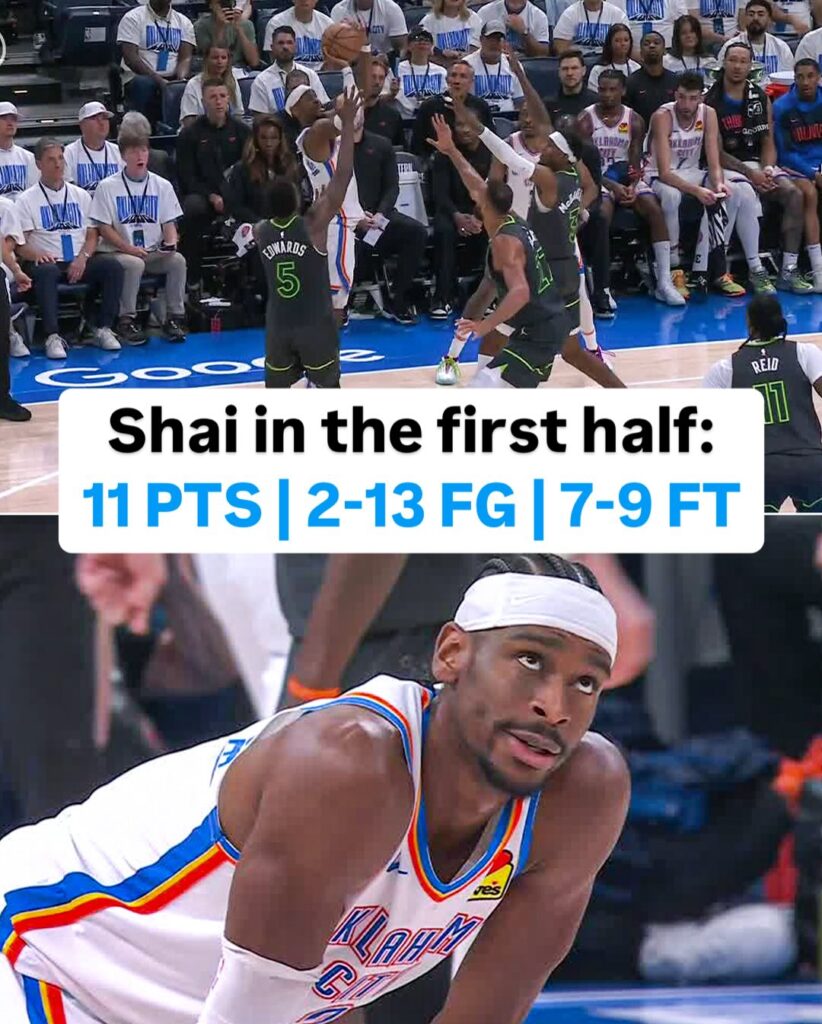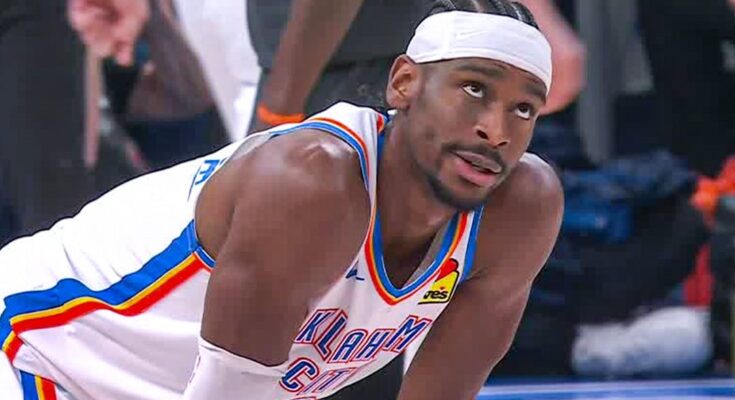
The 2025 NBA Playoffs have been full of highlight plays, buzzer-beaters, and breakout performances—but one of the most surprising storylines has flown somewhat under the radar: Minnesota has locked down Shai Gilgeous-Alexander.
Yes, you read that right.
The Timberwolves, known for their gritty defense and physical presence, have managed to neutralize one of the NBA’s most dynamic and efficient offensive players—and it’s happening on the biggest stage, when it matters most.
Shai Gilgeous-Alexander, affectionately known as SGA, is coming off an MVP-caliber season. He led the Oklahoma City Thunder to the top seed in the Western Conference and finished top three in scoring, dazzling fans with his smooth drives, tough finishes, and mid-range mastery. But in this playoff series against Minnesota, things have changed.
The Defensive Blueprint: Swarm, Switch, Suffocate
The Timberwolves have leaned heavily into their identity: elite, switchable, and aggressive defense. From the very beginning of the series, they’ve shown SGA relentless pressure, forcing him to make tough reads and taking away his favorite spots on the floor.
It starts with Jaden McDaniels, arguably the most underrated perimeter defender in the league. His length, quick feet, and discipline have made SGA uncomfortable, cutting off his driving lanes and challenging every shot without fouling. When McDaniels isn’t on him, Anthony Edwards, Nickeil Alexander-Walker (SGA’s cousin, no less), and even Kyle Anderson take turns frustrating the All-Star guard.
Minnesota isn’t blitzing SGA constantly—they’re doing something smarter: mixing coverages. Sometimes they switch. Sometimes they hedge. Occasionally, they send a double team late in the shot clock. The inconsistency is intentional—it forces SGA to think, to pause, to hesitate. And that hesitation is all Minnesota needs.
In the regular season, SGA thrived off rhythm. But in this series, the Timberwolves have stolen it from him.
The Numbers Don’t Lie
Coming into this series, SGA averaged nearly 31 points per game on 54% shooting. He was one of the most efficient high-volume scorers in the NBA, living in the mid-range and getting to the line with ease.
But against Minnesota?
His shooting percentage has dropped significantly. He’s struggled to find clean looks, particularly in isolation. The help defense is collapsing at the right moments, and Minnesota’s towering front line of Rudy Gobert and Karl-Anthony Towns has made finishing at the rim far more difficult than usual.
It’s not just that the numbers are down—it’s how they’re down. SGA looks uncomfortable. His usual grace and composure are being tested. That patented stop-and-pop jumper in the paint? Contested. That slick eurostep into a layup? Blocked. That easy blow-by off the dribble? Delayed by quick feet and quicker rotations.
This isn’t a slump. This is a system working exactly as designed.
Credit to Chris Finch and the Wolves’ Defensive Identity
Let’s give credit where it’s due. Chris Finch, Minnesota’s head coach, has built a team culture around defense. From the acquisition of Gobert to the development of McDaniels and Edwards as two-way forces, the Timberwolves have been preparing for this moment.
In the regular season, Minnesota boasted the #1 ranked defense in the NBA. They’re long. They’re physical. And they play with a chip on their shoulder.
What makes their game plan against SGA so impressive is that it hasn’t come at the cost of discipline. They’re not fouling excessively. They’re not over-rotating. They’re simply playing tight, connected team basketball, trusting each other to cover space and recover quickly.
It’s the kind of defense you need to win championships—and right now, it’s making one of the league’s brightest stars look mortal.
What This Means for OKC
For the Thunder, this is a major test.
Oklahoma City has been one of the most balanced and exciting young teams in the league, and SGA is the engine that powers their offense. When he struggles, the dominoes fall. Chet Holmgren and Jalen Williams have shown flashes, but without SGA breaking down defenses and drawing double teams, the Thunder’s offensive machine starts to stall.
This series is a wake-up call. Playoff basketball is different. Defenses are smarter, slower-paced, and far more physical. If OKC is going to extend this series—or potentially win it—they’ll need to make adjustments fast.
They might have to start running more off-ball actions for SGA, giving him easier touches off screens and forcing Minnesota to chase. They’ll need to move faster in transition, before Minnesota can set up their half-court wall. And SGA himself? He’ll need to respond the way great players do—by finding counters, staying aggressive, and trusting his teammates to open up the floor.
Is This the Passing of the Torch?
Interestingly, this series has spotlighted not just Minnesota’s defense, but also the rise of Anthony Edwards. While SGA has struggled, Edwards has flourished—attacking relentlessly, defending with purpose, and showing the kind of fire that sparks deep playoff runs.
It feels like a moment. The kind of moment where the league starts to shift.
SGA may be one of the best guards in the game, but this series is proving that the next generation of superstars—like Edwards—aren’t just coming; they’re here.
Final Thoughts
Minnesota hasn’t just slowed SGA down—they’ve made a statement. Against one of the game’s most efficient offensive weapons, the Timberwolves have shown that elite defense still wins in May.
And while it’s too early to count out a player as gifted as Gilgeous-Alexander, one thing is clear:
So far, Minnesota has locked him down. 😳



